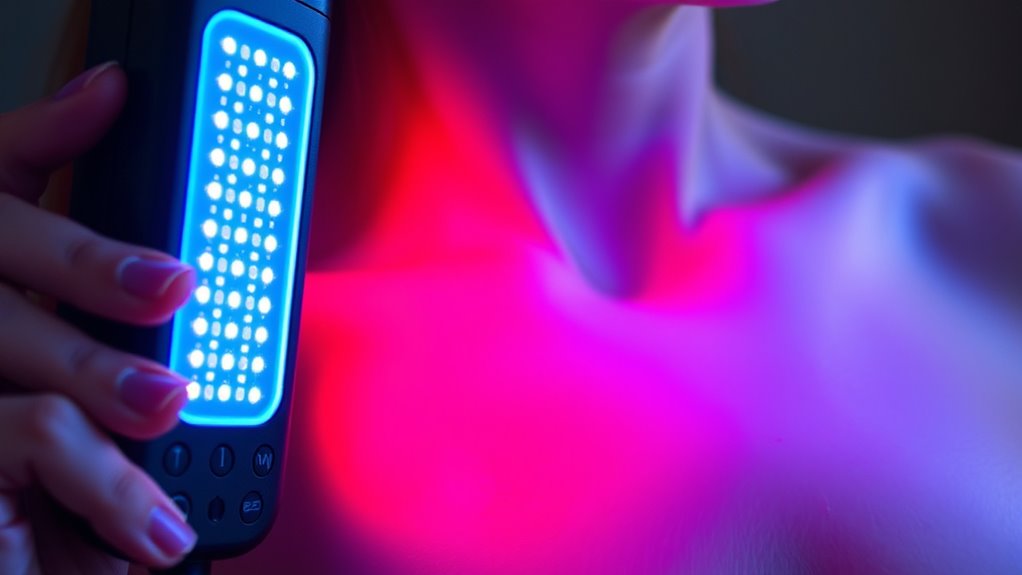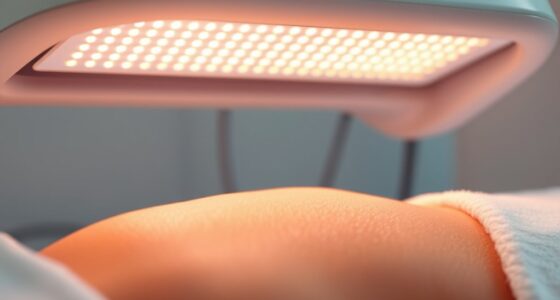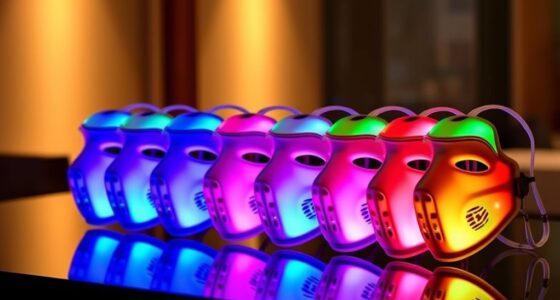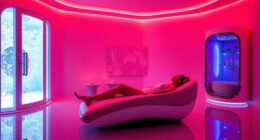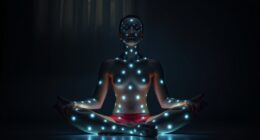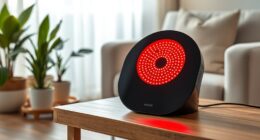In LED light therapy, dosage means the amount of light energy your skin receives during each session, which affects how well it works and stays safe. If the dosage is too low, you may see minimal results, but if it’s too high, your skin could become irritated or red. Finding the right balance is key for safe, effective treatments. Keep exploring to discover how to determine the best dosage for your skin needs.
Key Takeaways
- “Dosage” refers to the amount of light energy delivered to the skin during LED therapy.
- It includes parameters like wavelength, intensity, and duration of exposure.
- Proper dosage ensures effective results without causing irritation or discomfort.
- Dosage levels are guided by clinical research, skin type, and treatment goals.
- Monitoring and adjusting dosage helps optimize safety and treatment effectiveness.
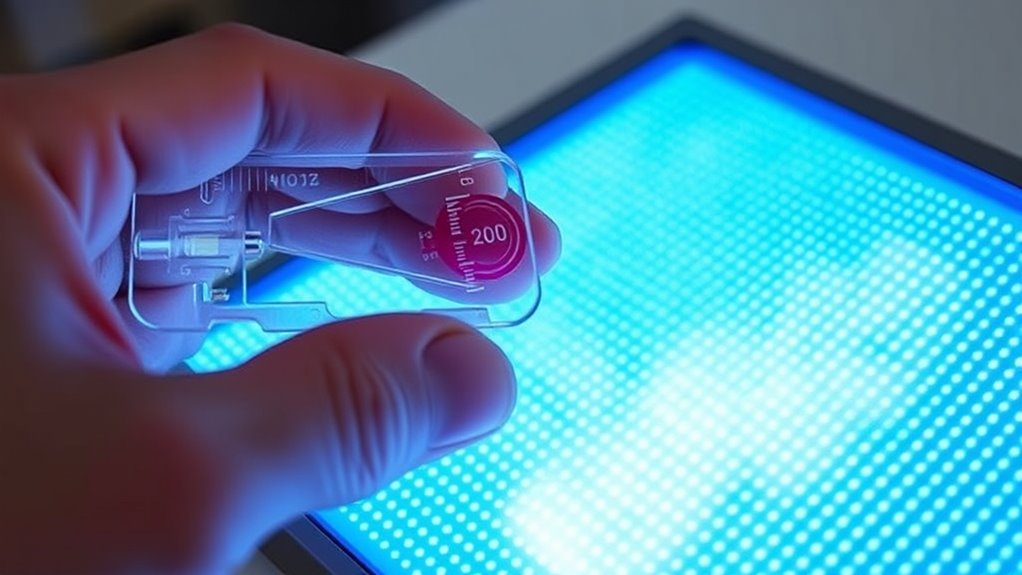
Understanding how dosage affects your treatment begins with recognizing the purpose of LED therapy. Different wavelengths target different skin issues—red light is often used for anti-aging, boosting collagen, and reducing inflammation, while near-infrared penetrates deeper to support tissue repair. Each of these applications requires a carefully calibrated dose. If the dose is too low, you might not see significant improvements in skin tone or texture. Conversely, an excessively high dose can lead to redness, irritation, or discomfort, diminishing your overall experience and results.
Manufacturers and practitioners determine the optimal dosage based on clinical research, but individual factors also matter. Your skin type, sensitivity, and specific skin concerns influence how much light you should receive. For example, sensitive skin may require a lower dose or shorter session times, while thicker or more damaged skin might benefit from a higher dose within safe limits. Listening to your skin’s response during and after treatments is vital—if you notice persistent redness or discomfort, it could mean the dose needs adjustment.
To guarantee you’re getting the right dosage, follow the guidance of trained professionals and adhere to device instructions. Many at-home devices come with preset treatment plans designed to deliver safe and effective doses. If you’re unsure, consulting with a dermatologist or skincare specialist can help tailor the therapy to your needs. Remember, consistency is key—regular sessions with appropriate dosages will produce better results over time. By understanding and respecting the concept of dosage, you take control of your LED therapy journey, increasing your chances of achieving healthier, more youthful skin safely and effectively.
Additionally, understanding the measurement of light energy ensures that you are receiving an appropriate and safe dose during your treatments.
Frequently Asked Questions
How Is the Optimal Dosage Determined for Individual Skin Types?
You determine the ideal LED light therapy dosage for your skin type by starting with manufacturer guidelines and adjusting based on your skin’s response. Observe how your skin reacts—if it feels sensitive or shows irritation, reduce the intensity or duration. For best results, consult a dermatologist or trained professional who can customize the treatment plan for your specific skin concerns and guarantee you’re using the correct dosage safely.
Can Dosage Adjustments Improve Treatment Outcomes for Specific Skin Concerns?
Yes, adjusting the dosage can markedly improve your treatment results for specific skin concerns. By increasing or decreasing the light intensity and duration, you target your skin’s needs more precisely. For example, higher doses may boost collagen production, helping with wrinkles, while lower doses can reduce inflammation. Always work with a professional to tailor your dosage, ensuring safe and effective outcomes tailored to your unique skin condition.
Are There Any Risks Associated With Over- or Under-Dosing in LED Therapy?
Over- or under-dosing in LED therapy can pose risks. Imagine giving someone too much sun—your skin could burn, just like overexposure. Too little, and the benefits might not manifest. Excessive doses may cause redness or sensitivity, while insufficient doses might yield no improvement. You should follow recommended protocols to avoid these issues, ensuring safe, effective results. Proper dosing maximizes benefits and minimizes potential side effects.
How Does Session Frequency Impact the Overall Effectiveness of LED Treatments?
You’ll see better results if you stick to the recommended session frequency. Regular treatments build up benefits over time, enhancing skin rejuvenation and healing. Skipping sessions can slow progress, while too many might cause irritation or diminish effectiveness. Consistency is key, so follow your provider’s advice on how often to schedule treatments. This guarantees you maximize benefits without risking overexposure or under-treatment.
Is Dosage Standardized Across Different LED Devices and Brands?
No, dosage isn’t standardized across different LED devices and brands. You’ll find variations in wavelength, intensity, and treatment time, which influence how much light your skin receives. Always follow the manufacturer’s guidelines for your specific device, and consult with a professional if you’re unsure. Customizing your treatment guarantees you get the best benefits without risking overexposure, making it crucial to understand each device’s unique specifications.
Conclusion
Think of LED light therapy as a gentle dance between light and your skin, where the right dosage sets the rhythm for glowing results. When you find that perfect balance, you’re revealing a secret garden of renewal and radiance. Don’t rush—like tending a delicate bloom, patience and proper dosage nurture your skin’s transformation. Embrace the rhythm, trust the process, and let the light guide you toward luminous, healthy skin.
